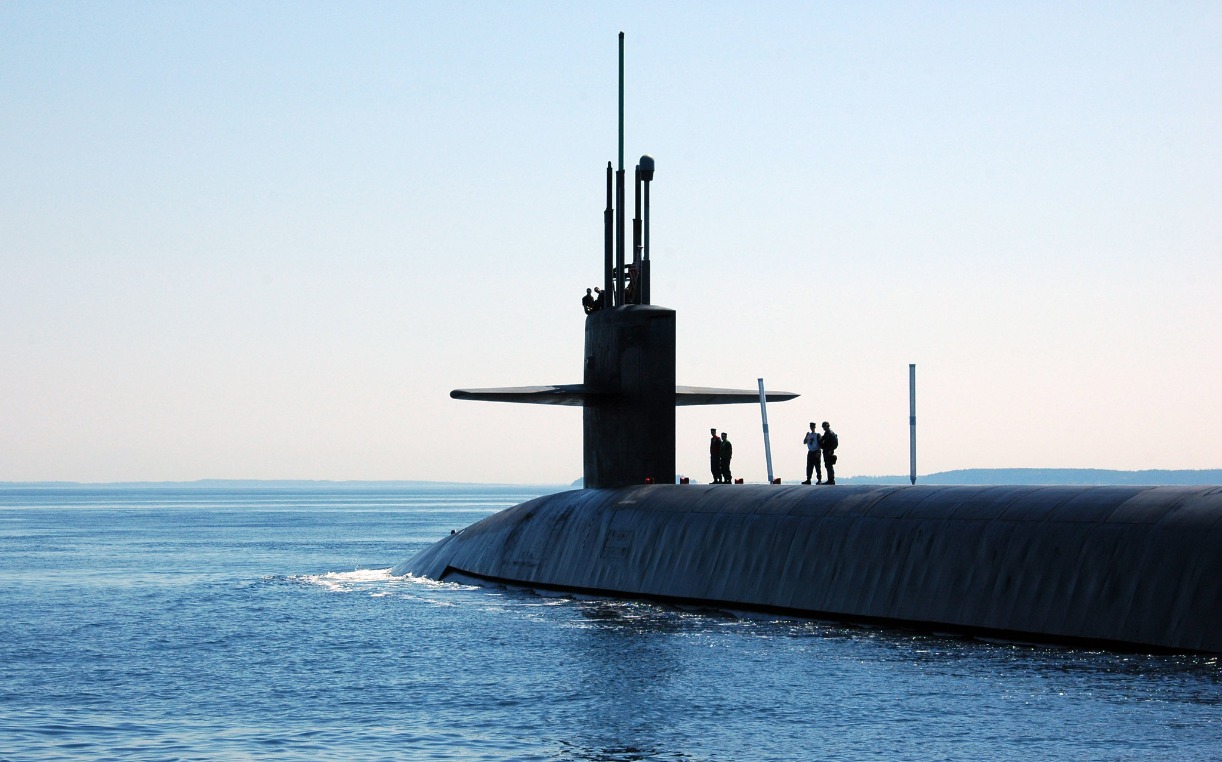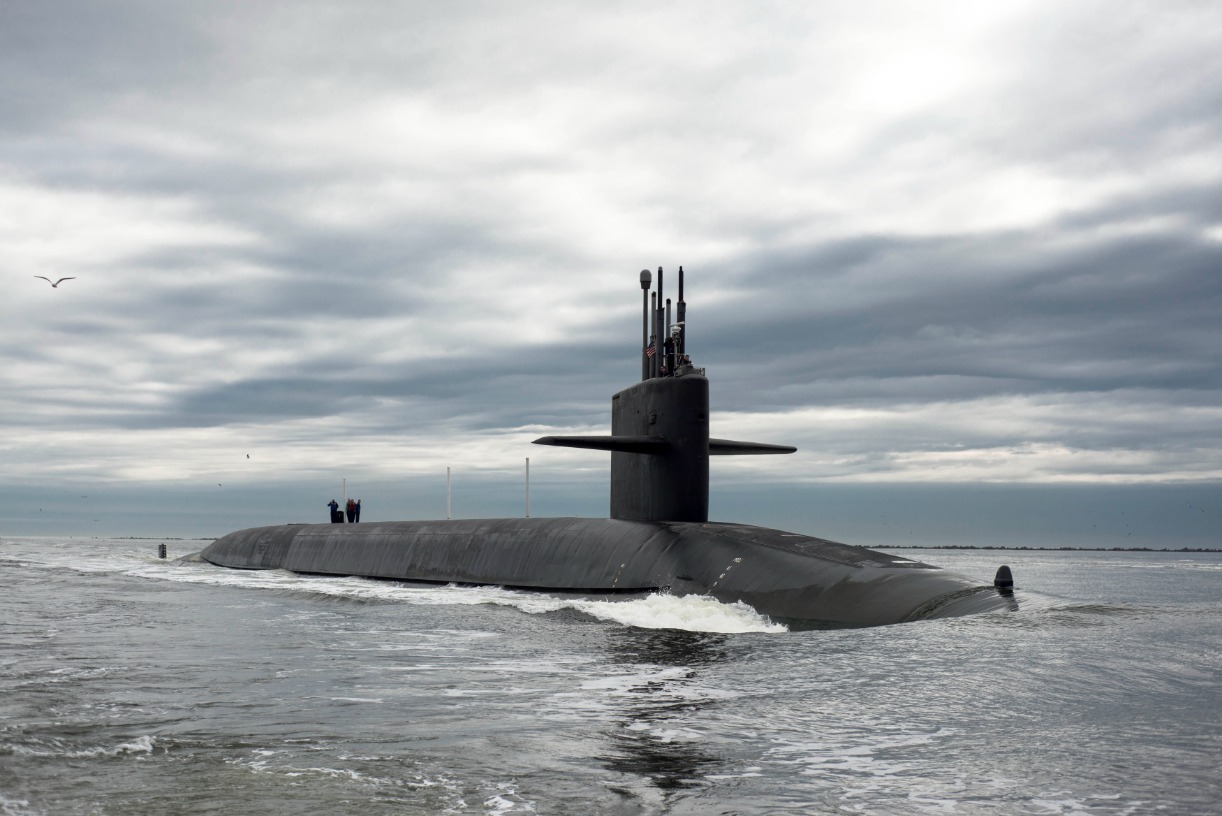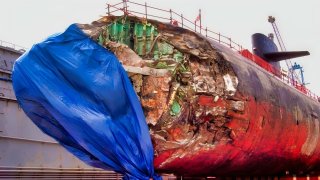The Bow Looks 'Ripped Off': A Navy Attack Submarine Hit an Underwater Mountain
The USS San Francisco (SSN-711), a Los Angeles-class nuclear-powered attack submarine, was involved in a significant accident in 2005 when it collided with an uncharted undersea mountain near Guam.
What You Need to Know: The USS San Francisco (SSN-711), a Los Angeles-class nuclear-powered attack submarine, was involved in a significant accident in 2005 when it collided with an uncharted undersea mountain near Guam.

-The collision resulted in the death of one sailor, Machinist's Mate 2nd Class Joseph Allen Ashley, and injuries to 98 crew members.
-Although the submarine's inner hull and nuclear reactor remained intact, the bow was severely damaged.
-Investigations revealed that the crew had not been using updated navigational charts. The commanding officer, Commander Kevin Mooney, was relieved of duty, and several crew members faced disciplinary actions.
-After extensive repairs, including replacing the damaged bow with that of the decommissioned USS Honolulu, the San Francisco returned to service in 2009. A new Virginia-class submarine named USS San Francisco is planned, aiming for a service history more successful than its predecessor's troubled past.
The 2005 USS San Francisco Submarine Collision: A Deep-Sea Disaster Unveiled
To date, there have been three United States Navy vessels named for the "City by the Bay," including C-5, a protected cruiser that later served as a minelayer during the First World War; and CA-38, a New Orleans-class heavy cruiser that went on to be among the most decorated ships of World War II, earning a Presidential Unit Citation as well as 17 battle stars.
A fourth USS San Francisco was announced last year. The future boat will be a Virginia-class nuclear-powered fast attack submarine – featuring the latest Block V advancements including the Virginia Payload Module (VPM). What is especially notable is that the third USS San Francisco (SSN-711) was also a nuclear-powered attack submarine.
The Third USS San Francisco – Remembered For a Unforgettable Accident
It is likely any crew that mans the future USS San Francisco will hope it has a service career more like CA-38 than the Los Angeles-class sub that is today remembered for a 2005 accident that could been a major disaster.
During a deployment to the Indo-Pacific, SSN-711 was operated at a depth of 525 feet while in waters approximately 350 miles southeast of Guam. It had been uneventful until the boat ran aground after striking a seamount, resulting in the death of one crewman – 24-year-old Machinist's Mate 2nd Class Joseph Allen Ashley – while 98 sailors were injured.
Fortunately, the inner hull of the Los Angeles-class fast submarine was not breached and more importantly, there was no damage to the boat's nuclear reactor. Thanks to the quick efforts of the command staff and crew, USS San Francisco was able to surface and was accompanied back to port under escort from the USCGC Galveston Island (WPB 1349), USNS GYSGT Fred W. Stockham (T-AK-3017), and USNS Kiska (T-AE-35), while MH-60S Knighthawk helicopters and a P-3 Orion provided additional aid.
Yet, the damage was significant that it took the submarine, traveling at just 10 miles per hour, some 52 hours to reach Guam.
How Did a Submarine Hit an Underwater Mountain?
Jokes could be made as to how a submarine hit a mountain, but there are a lot of obstacles under the sea and submarines don't have windows at the front.
Moreover, as Brandon J. Weichert explained for The National Interest, "In 2005, the navigational technology was not as good as it is today. What’s more, the submarine in question was moving at a fast clip. There are systems onboard, such as the active sonar array, that could have detected the presence of the seamount. Rarely, however, do submarines operate with the active sonar toggled on. These systems are instead saved for when a submarine is in combat, and the crew needs precise targeting for their torpedoes."
SSN-711's passive sonar array was running, but it was not able to detect the seamount.
The Aftermath
The subsequent investigation found that the boat's commanding officer Commander Kevin Mooney was at fault for the incident – citing poor judgment that led to the collision. It was also determined that the boat's crew wasn't using the most up-to-date charts to plot their course, even though the crew had received updated navigation charts.
As a result, the U.S. Navy relieved Mooney of his command while it also issued a letter of reprimand. Moore was not charged with any crime, however, nor was he court-martialed.
Six other crew members were found guilty at their own non-judicial punishment hearings ("Captain's Mast") of hazarding a vessel and dereliction of duty, and they were reduced in rank and given punitive letters of reprimand.

Though Moore and those six others received punishment, 20 other officers and sailors of USS San Francisco received awards for their actions in the crisis. That included letters of commendation, the Navy and Marine Corps Achievement Medal, the Navy and Marine Corps Commendation Medal, and the Meritorious Service Medal.
SSN-711 Following the Accident
After USS San Francisco limped back to Guam, the boat received temporary repairs that enabled the sub to return to Pearl Harbor for a more extensive refurbishment. The damage was significant enough that discussions were made about retiring the submarine.
Yet, as USS Honolulu was set to retire in 2007, while USS San Francisco was scheduled to remain in service until at least 2017, the U.S. Navy opted to take the nose from the former boat and give the latter a much-needed "make over." SSN-711 returned to service in April 2009, while the Los Angeles-class fast attack submarine was only finally retired in November 2016, when it was converted to a moored training ship (MTS) and sent to the U.S. Navy's Nuclear Power Training Unit in Charleston, South Carolina.
Author Experience and Expertise: Peter Suciu
Peter Suciu is a Michigan-based writer. He has contributed to more than four dozen magazines, newspapers, and websites with over 3,200 published pieces over a twenty-year career in journalism. He regularly writes about military hardware, firearms history, cybersecurity, politics, and international affairs. Peter is also a Contributing Writer for Forbes and Clearance Jobs. You can follow him on Twitter: @PeterSuciu. You can email the author: [email protected].
Image Credit: Creative Commons and/or Shutterstock.


